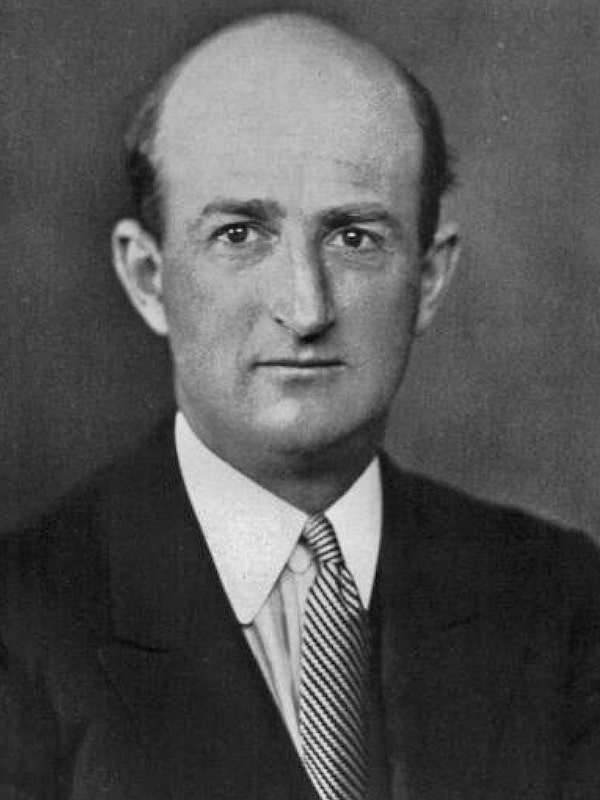John L. Lovibond
John Locke ‘Jock’ Lovibond (1907-1954) was an English physician
Lovibond was among the first to offer a criteria for the diagnosis of finger clubbing. In 1938, he defined the ‘‘profile sign’’ of the thumb (Lovibond’s angle as it later became known), as the angle made by the nail as it exits the proximal nailfold.
Biography
- Born on May 4, 1907
- 1929 – BA
- 1932 – MRCS LRCP
- 1933 – MA
- 1934 – MB BCh
- 1935 – MRCP
- 1936 – MD
- 1943 – FRCP
- Died on May 4, 1954
Medical Eponyms
Lovibond angle (profile sign) [1938]
In 1938, Lovibond was among the first to offer a criteria for the diagnosis of finger clubbing. He defined the ‘profile sign’ of the thumb (Lovibond’s angle), as the angle made by the nail as it exits the proximal nailfold.
Lovibond reported that a profile sign of greater than 180° could be used to differentiate true clubbing from other conditions such as simple nail curving and paronychia, which retained an angle closer to 160°.
From a perusal of the illustrations it will be seen that the normal nail proceeds from the finger at an obtuse angle of about 160° (Fig. 1). This is peculiarly well seen in the normal thumb. When “curving” is present the fundamental angle between phalanx and nail is undisturbed, but the distal part of the nail is curved downwards, maybe very considerably (Fig. 2)…Clubbing can be differentiated from curving, and, indeed, from other conditions, because even in its mildest form this essential angle is characteristically obliterated (Fig. 3). With gross clubbing the angle at the base of the nail becomes greater than 180°; and projects (Fig. 4).
Lovibond, 1938

- Normal finger: showing base angle of nail (usually about 160°).
- “Curving” of nail: a variation of the normal. note: Essential base angle is preserved.
- Mild clubbing: note: Base angle obliterated. (Clubbed finger-nails may also be curved.)
- Gross clubbing: Base of nail projects. note: Diameter of finger at nail base is increased in both dimensions.
- Chronic paronychia: Fundamental base angle of nail unaltered.
- Heberden’s node: Base angle of nail normal.
It is, unfortunately, never possible to emphasise the minor degrees of organic change, so commonly encountered in disease, without perhaps ruthless dogmatism. This method of describing the deformity that characterises the clubbed finger has proved to be of some value when attempting to explain the condition to students. It is, therefore, hoped that it will be found helpful to the clinician in those many difficult cases that confront him where there are small, yet not less significant, degrees of clubbed fingers.
Lovibond, 1938
Key Medical Contributions
Major Publications
- Lovibond JL. The Diagnosis of Clubbed Fingers. Lancet 1938; 231(5972): 363-364
Controversies
References
Biography
- Biography: John Locke Lovibond. Lives of the Fellows of the Royal College of Physicians of London. Munk’s Roll: Volume V: 247.
- Bedford DE. J. L. Lovibond. Br Heart J. 1954 Oct;16(4):465-7.
- Bibliography. Lovibond, John Locke. WorldCat Identities
Eponymous terms
- Curth HO, Firschein IL, Alpert M. Familial clubbed fingers. Arch Dermatol. 1961 May;83: 828-36 [Curth modified profile sign]
- Rice RE, Rowland PW. A quantitative method for the estimation of clubbing. Scientific Session of the Senior Class of Tulane University Medical School 1961;11:302-15.
- Regan GM, Tagg B, Thomson ML. Subjective assessment and objective measurement of finger clubbing. Lancet 1967; 1: 530-2. [Hyponychial line]
- Myers KA, Farquhar DRE. Does this patient have clubbing? JAMA 2001; 286: 341-7.
- Sarkar M, Mahesh DM, Madabhavi I. Digital clubbing. Lung India. 2012 Oct;29(4):354-62.
[cite]

